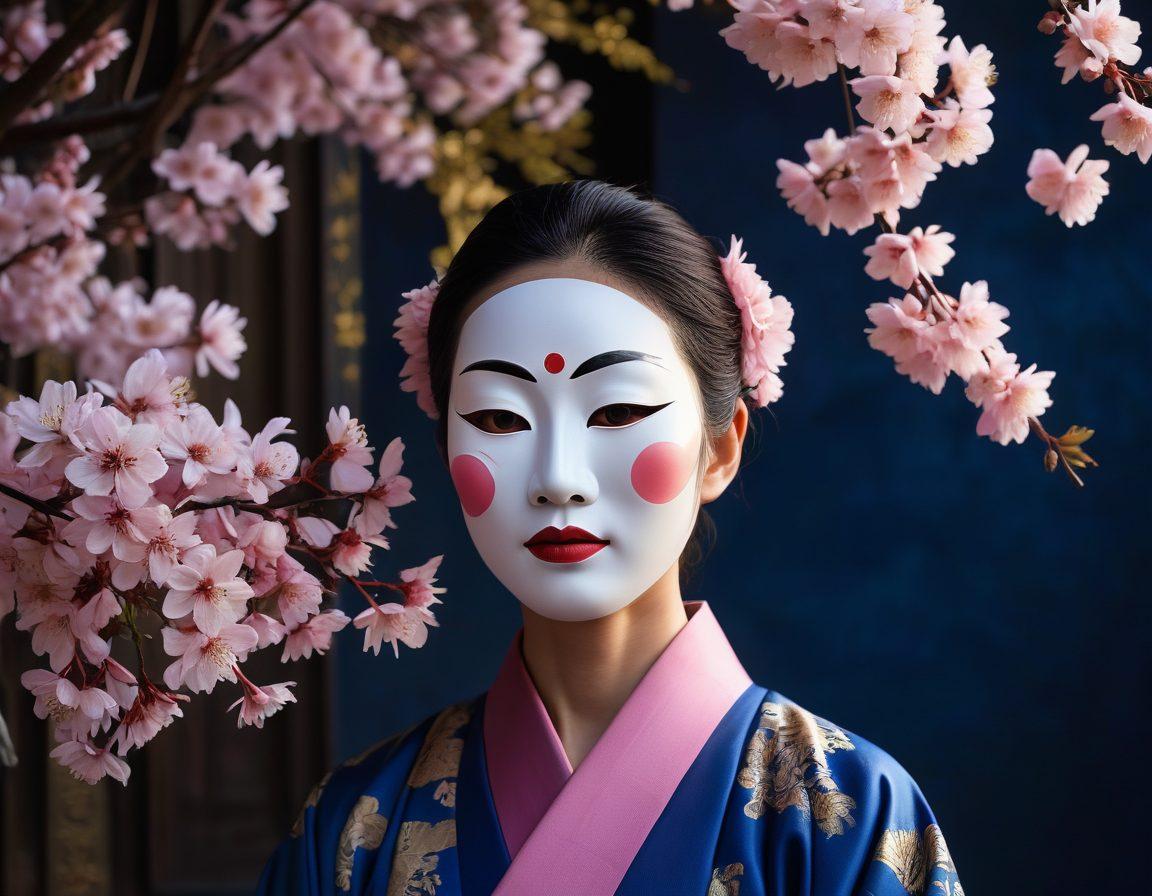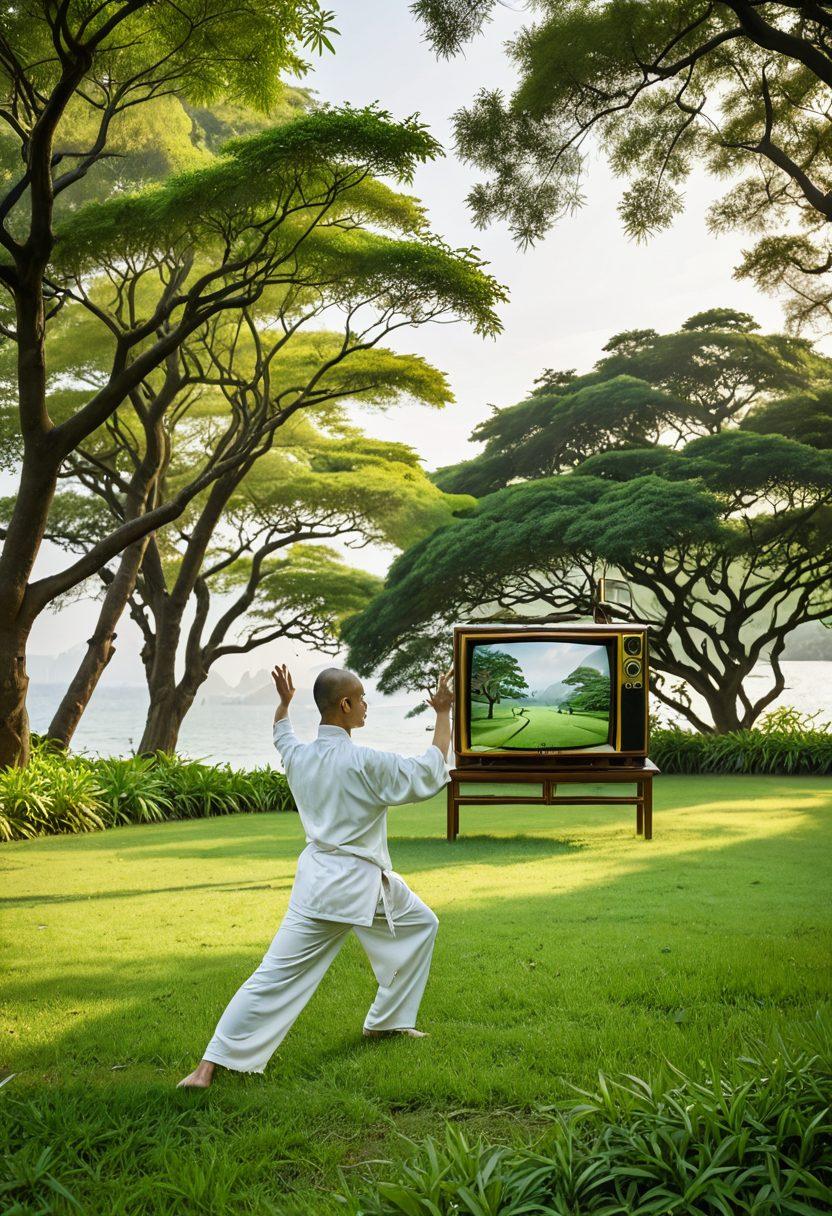Finding Light in the Shadows: Exploring Taiwanese Culture Through Melancholy in Media
In the vibrant tapestry of Taiwanese culture, a thread of melancholy runs through many forms of media, connecting deeply with audiences from all walks of life. As the sun sets over Taichung or stirs the waves of Kenting, the nation's television shows, streaming videos, and broadcast programming encapsulate more than mere entertainment. They mirror the complexities of human emotion – from sorrow and grief to resilience against despair. How does this interplay between light and shadow shape the stories that Taiwanese media tells? What secrets does it hold about the human condition? Let’s embark on a journey that unveils the depths of Taiwanese culture through its exploration of melancholy.
From the heart-wrenching scenes in classic dramas to the evocative narratives in contemporary films, Taiwanese media has embraced themes of anguish and unhappiness. These portrayals resonate with viewers and echo the realities of life, grappling with depression and sadness in the face of modernity. Take, for instance, the popular television show 'The World Between Us,' where the characters navigate grief and despair while trying to find hope. This program exemplifies how art imitates life, asking us to consider whether sorrow can pave the way for resilience. As writer Junot Díaz once said, 'Sorrow is a fruit. God does not make it grow on limbs too soft for handling.' Can art be a balm for the anguish we endure?
Taiwanese culture thrives on the balance of yin and yang, a philosophy that is palpable in its media landscape. Streams of drama and entertainment often weave together tales of loss with moments of unexpected joy, akin to practicing tai chi—where grounding movements blend seamlessly with the ebb and flow of conflict and harmony. This artistic representation allows audiences to embrace their sorrow and learn from it, making it a critical aspect of Taiwanese storytelling. Audiences watch, resonating with the characters wrestling with their personal despair, asking themselves, 'How can I find solace amidst turmoil?'.
Interestingly, the rise of streaming platforms has amplified the accessibility of Taiwanese media, allowing a global audience to engage with these poignant narratives. With just a click, viewers can immerse themselves in shows that reflect deep-rooted cultural sentiments where the shadows often depict the struggle against sorrow. This interaction propels discussions around mental health, helping society to confront and de-stigmatize issues like depression and grief. Are we, perhaps, at the forefront of a cultural shift wherein media not only entertains but also offers a mirror to our collective soul?
At its core, Taiwanese media does more than capture the sad tales of life; it celebrates resilience and the spirit of overcoming despair. Through a lens of authenticity, these shows remind us that feeling anguish and sorrow is a shared human experience. So, the next time you curl up on the couch with a touching Taiwanese drama, remember that you are partaking in a cultural dialogue steeped in the richness of emotion. Embrace that melancholy, as it lingers in the shadows, inviting you to reflect on your own stories. Could these shared narratives help us heal, offering a path toward understanding and acceptance in a world that often feels heavy with grief?
From Grief to Grace: The Role of Sorrow in Taiwanese Entertainment
In a world where happiness often takes the spotlight, Taiwanese culture boldly embraces the power of sorrow. The poignant narratives woven into television and streaming programming reveal a rich tapestry of grief, melancholy, and ultimately, grace. From touching dramas to heartfelt music, Taiwanese entertainment offers a profound reflection of the human experience—demonstrating that amidst the turmoil of anguish and despair, there exists an undeniable resilience. What can we learn from these stories steeped in sorrow? How does embracing our unhappiness pave the way for personal growth and healing?
Sorrow, often seen as a heaviness to bear, is deeply embedded in the heart of Taiwanese culture. In television shows and movies, it’s not uncommon to encounter characters grappling with loss, whether it’s the death of a loved one or the pain of a broken relationship. These stories resonate with viewers, inviting them not only to empathize with the characters but also to confront their own emotions. As the saying goes, "In every heart, there’s a story of sorrow that needs to be told." This storytelling creates a bridge between the audience and the screen, fostering a sense of shared experience that is both comforting and cathartic.
Consider the world of Taiwanese theater, where the art of tai chi often mirrors the delicate balance between grief and grace. Just as tai chi practitioners find fluidity in slow movements, Taiwanese media captures the ebb and flow of sorrow through graceful storytelling. For instance, many shows showcase characters who face their grief, retreat into despair, yet ultimately journey towards self-acceptance and healing. This artistic representation encourages us to view our own 'unhappy' emotions not as burdens, but as part of the natural rhythm of life that must be honored and explored.
These narratives around melancholy also serve a greater purpose beyond entertainment; they reflect the societal challenges faced by many, especially in an era where mental health struggles like depression are prevalent. The open dialogue regarding grief and sadness in Taiwanese entertainment demonstrates the potency of media as a tool for connection and understanding. When we watch someone on screen navigating their own despair, we begin to see our struggles reflected back at us. Perhaps the question isn't whether we will experience sadness as humans, but rather how we can transform that sorrow into something powerful and uplifting. What if we embraced our grief as a teacher instead of an enemy?
As we delve deeper into Taiwanese culture, we find that the arts are all-encompassing, serving as both a mirror and a map. Whether through videos, programming, or live performances, the exploration of sorrow in Taiwanese entertainment not only enriches our understanding of the complexities of grief but also celebrates the triumph of the human spirit. The next time you sit down to watch a Taiwanese show or listen to a heart-wrenching ballad, consider allowing yourself to feel the weight of that melancholy. Embrace it, learn from it, and let it guide you along a journey from grief to grace. Your own story of resilience may just begin with one powerful question: How can I turn my sorrow into strength?
Tai Chi and Television: Balancing Moments of Anguish in Taiwanese Culture
Taiwan is an island renowned for its vibrant culture and stunning landscapes, but beneath the surface lies a rich tapestry of sorrow and melancholy that permeates its media. For many, the evening television shows are a solace from the chaos of daily life, a chance to step into a world that reflects both the beauty and the agony of the human experience. Within this unseen paradox, Taiwanese culture profoundly embraces the balance between joy and grief. Are we ready to delve into this intricate dance of emotions?
The act of watching television in Taiwan often feels like a powerful ritual, where viewers gather around screens to experience stories that evoke despair, anguish, and, sometimes, unexpected laughter. Popular shows frequently tackle themes of grief and depression—topics that resonate deeply with Taiwanese audiences who have faced a history of hardships. This embrace of sorrow, rather than shying away from it, highlights the importance of discussing unhappiness and melancholy, offering a poignant reminder that these feelings are universal. Could it be that confronting such emotions on-screen fosters a collective healing in society?
At the helm of Taiwanese culture is the ancient practice of Tai Chi—a form of exercise that embodies the philosophy of balancing opposing forces. Just like Tai Chi, which encourages slow, deliberate movements to cultivate inner peace, Taiwanese television artfully reflects a blend of happiness and sorrow. In a particular episode, a character might be grappling with despair one moment, and then find moments of levity in their interactions with friends the next. This artful juxtaposition compels viewers to ponder: how can we find balance in our own lives amidst the constant ebb and flow of joy and grief?
Interestingly, the rise of streaming platforms has given way to a new era in Taiwanese media, allowing for a deeper exploration of themes surrounding melancholy. Shows like ‘The Way We Are’ and ‘Our Times’ vividly showcase personal stories steeped in anguish, while simultaneously providing an exploration of cultural and social dynamics. As viewers now have the unique ability to binge-watch episodes, there’s room for introspection and dialogue around the stories they consume. Are we becoming more aware of our own feelings of anguish as we take on these narratives?
In conclusion, Taiwanese culture, heavily influenced by its historical context, exemplifies a distinct relationship between Tai Chi and its television programming, creating an evocative landscape that resonates deeply with sorrow and melancholy. While these emotions may often seem burdensome, Taiwanese storytelling reminds us of their significance and encourages us to embrace our own grief. As we reach out for balance—both in our screens and our lives—remember that every moment spent engaging with such media enriches our understanding of ourselves and the world around us. So next time you’re watching a Taiwan-based show or practicing Tai Chi, take a moment to truly feel the layers of emotion it evokes. What lessons in balance and acceptance will you discover within these reflections?


